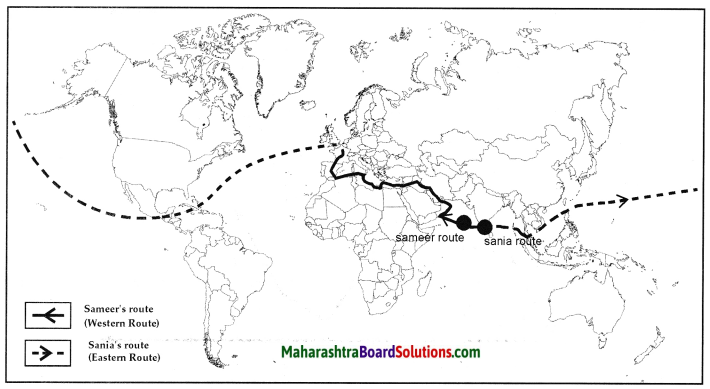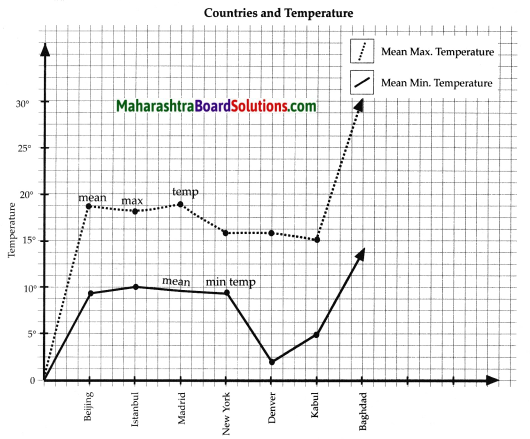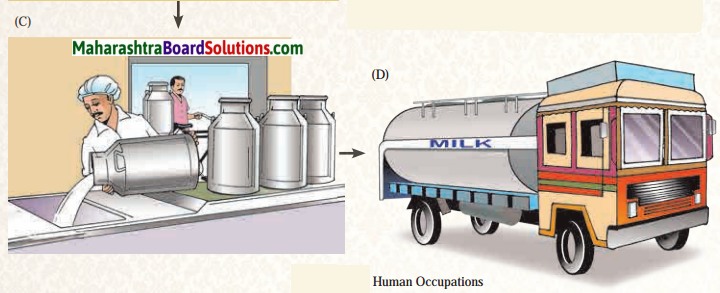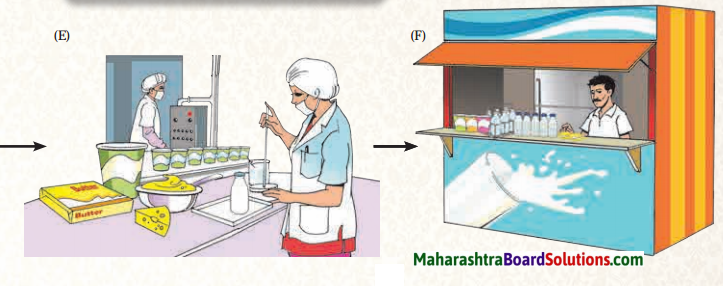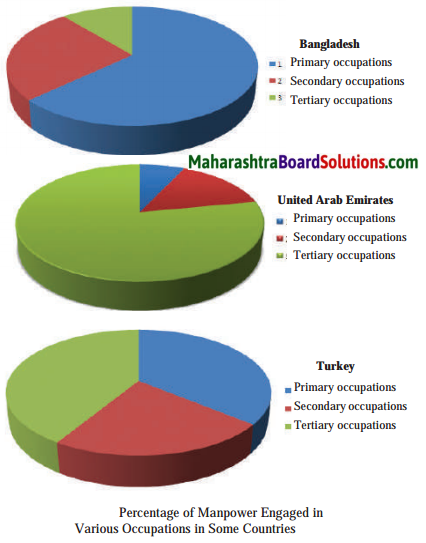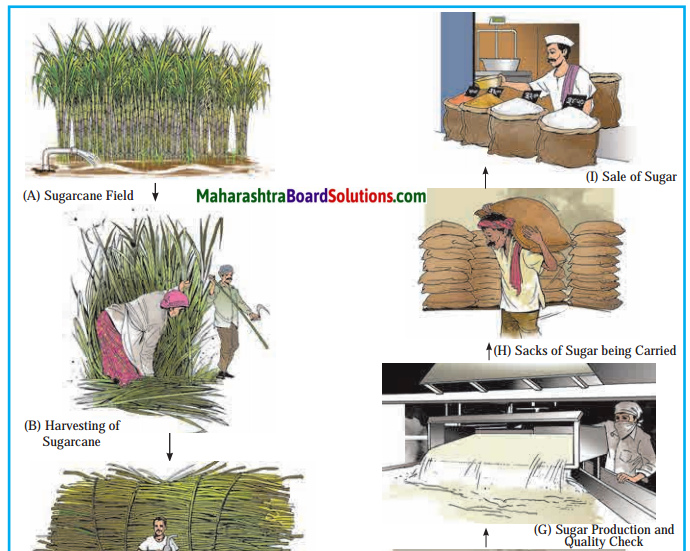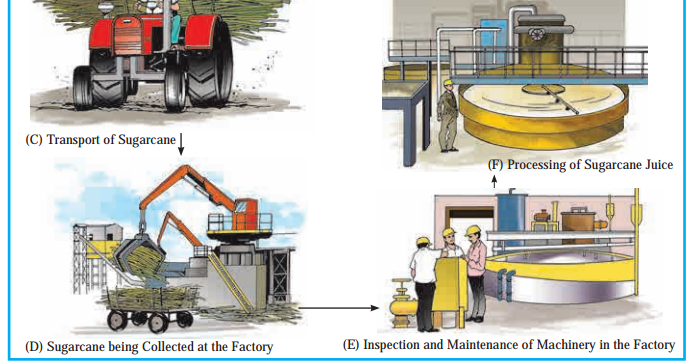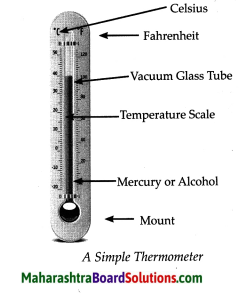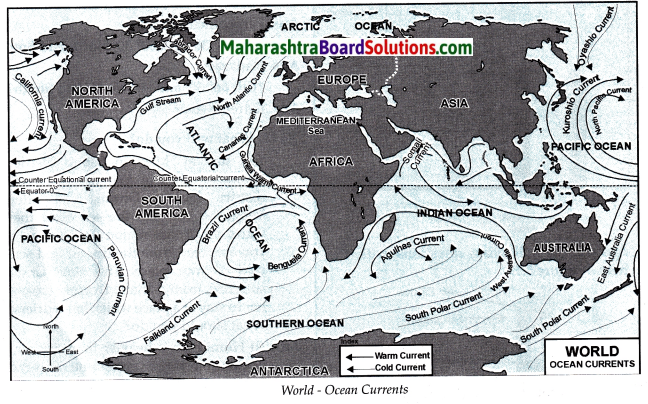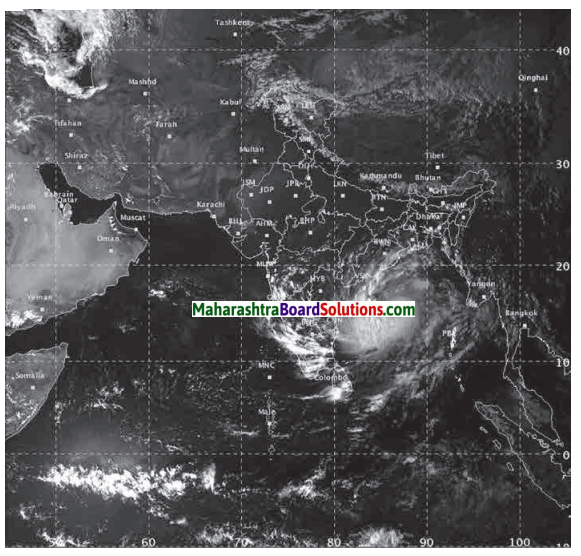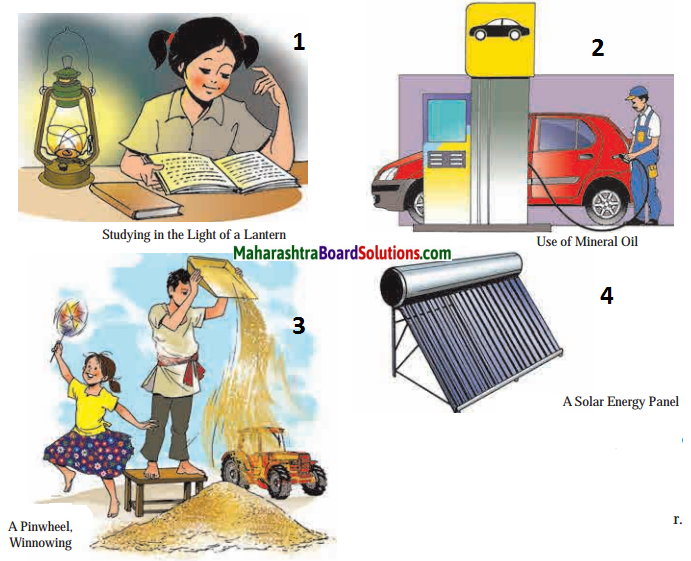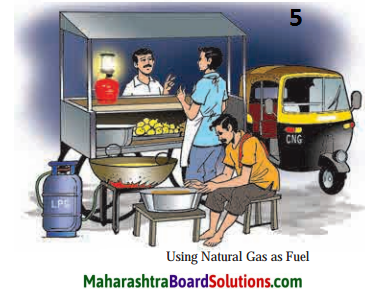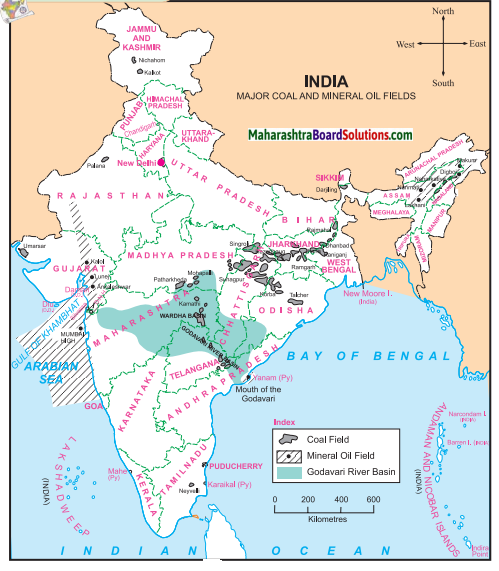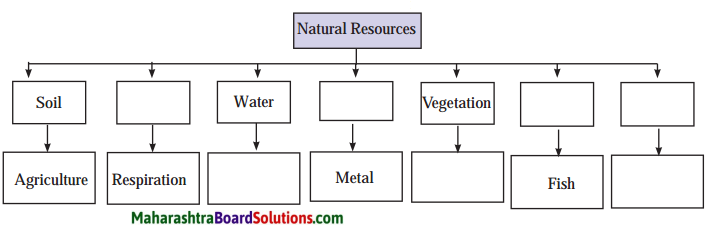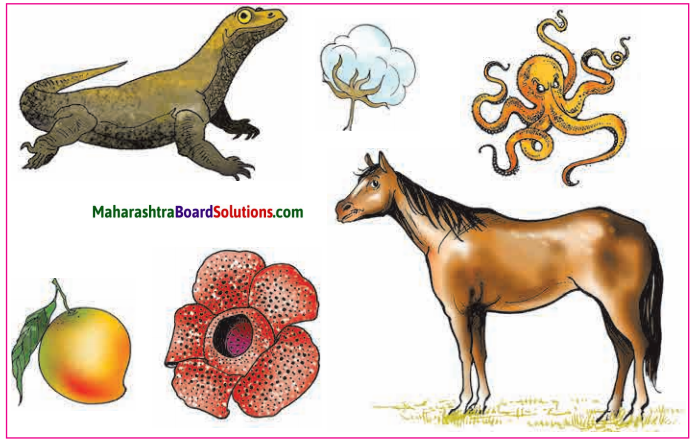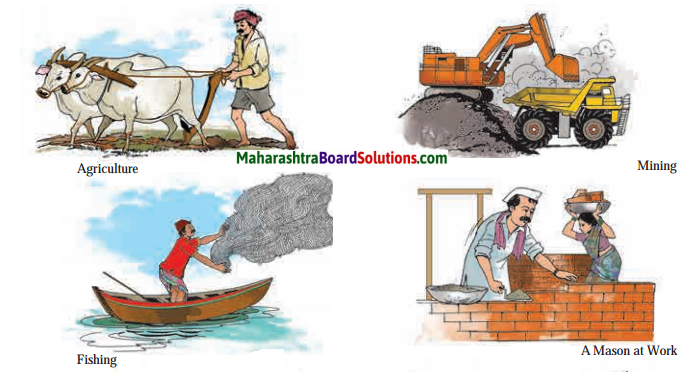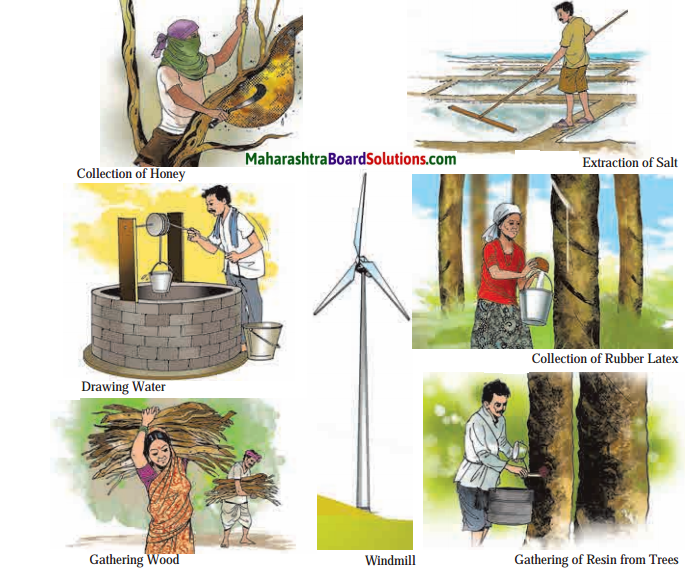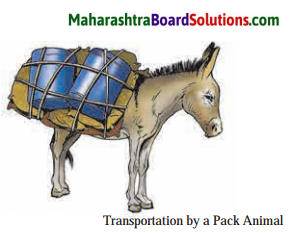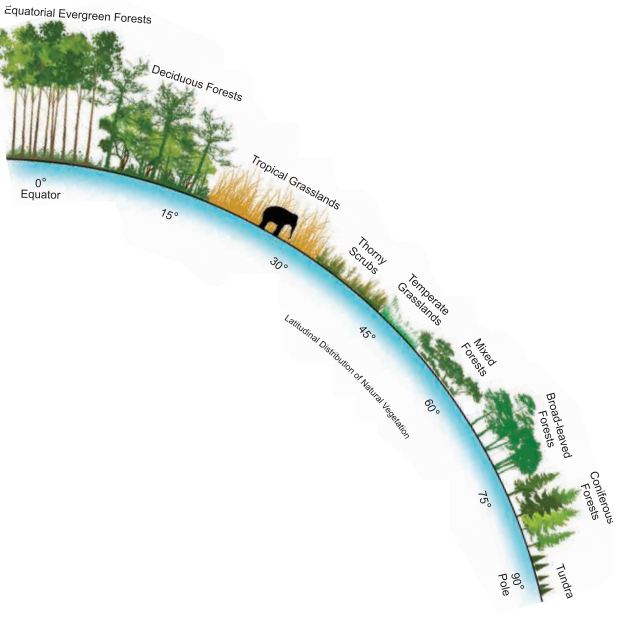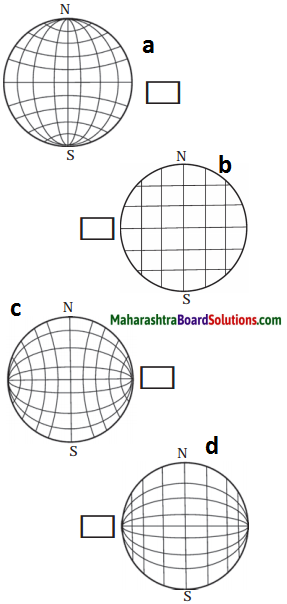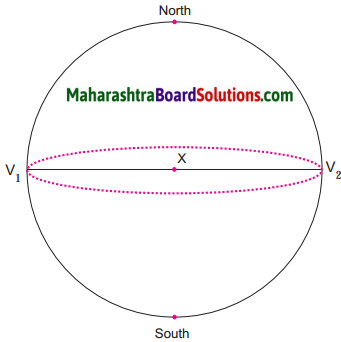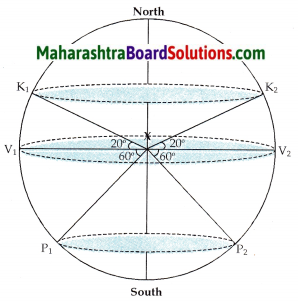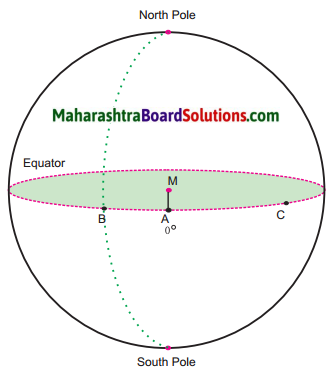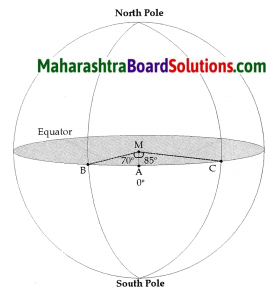Maharashtra Board Class 6 Civics Solutions Chapter 4 Urban Local Government Bodies
Class 6 Civics Chapter 4 Urban Local Government Bodies Textbook Questions and Answers
1. Choose the right option and fill in the blanks:
Question 1.
The first city in India to have a Municipal
Corporation is
(a) Delhi
(b) Mumbai
(c) Agra
Answer:
Mumbai
Question 2.
The body that looks after the administration of places that are in the process of becoming cities:
(a) Municipal Council
(b) Municipal Corporation
(c) Nagar Panchayat
Answer:
Municipal Council
![]()
Question 3.
The office bearer who supervises the work of the Municipal Council is the
(a) Chief Officer
(b) Executive Officer
(c) Commissioner
Answer:
Executive officer
2. Answer in brief:
Question 1.
What problems do people face in cities?
Answer:
There are several problems in cities: Shortage of housing, insufficient space, traffic congestion, problem of waste disposal, increase in crime and a large proportion of slum population.
Question 2.
Name the various committees of the Municipal Corporation.
Answer:
Education committee, Health committee, Transport committee, Standing committee, Ward committee, Women and Child Welfare committee, etc.
![]()
3. Make a chart giving information about the urban local government bodies according to the points given below.
| Points | Nagar Panchayat | Municipal Council | Municipal Corporation |
| (1) Office Bearers and Officers | |||
| (2) Number of Members |
Answer:
| Points | Nagar Panchayat | Municipal Council | Municipal Corporation |
| (1) Office Bearers and Officers | President and Vice President Chairman Executive officer Councillors | President Vice president Corporators Executive officer | Mayor Deputy Mayor Corporators Municipal Commissioner |
| (2) Number of Members | 10 elected ward members, 3 nominated members | Determined so as to be in proportion to the population of the city | Determined so as to be in proportion to the population of the city |
4. Can you tell?
Question 1.
Which are essential functions of the Municipal Council.
Answer:
The essential functions of Municipal Council are:
- Lighting of public streets.
- Providing drinking water.
- Maintaining public hygiene.
- Sewage disposal.
- Registration of birth/death/marriage, etc.
Question 2.
Where does the Nagar Panchayat function?
Answer:
Nagar Panchayat functions in those areas which are neither fully rural nor fully urban.
5. Make different lists of places in your district according to whether they have a Nagar Panchayat, Municipal Council or a Municipal Corporation.
Activities:
- Make your own health awareness slogans to help prevent the spread of infectious diseases, and display them in your classroom.
- Visit the Municipal Corporation nearest to you and find out which new schemes have been taken up.
- Discuss in class what you could do to contribute to them.
![]()
Class 6 Civics Chapter 4 Urban Local Government Bodies InText Questions and Answers
What would you do?
Question 1.
When you hand over your household waste to the waste pickers.
Answer:
- I will ensure that I separate organic and inorganic waste.
- I will ensure that if there is anything which can be reused and recycled then it is sent to the recycling centre.
- E-waste if any, will be collected and sent to the e-waste processing centre.
Question 2.
The road is waterlogged as the water pipe has broken.
Answer:
- I will immediately inform the public works department.
- I will ensure that quick steps are taken to avoid the waste of the precious resource.
Question 3.
You notice that unclean, impure water is being used for pani puns.
Answer:
- I will immediately inform the food safety and sanitation department about the same.
- I will ensure that strict action is taken against the vendor.
Question 4.
Many people are throwing plastic bags from the bridge into the river.
Answer:
- I will inform the Municipal Commissioner about the same.
- I will request him to create awamess about the need to take steps to control pollution of water bodies.
- I will also request him to develop environment consciousness amongst the people about the hazards of using plastics and its disposal in water bodies.
Question 5.
The Municipal Councils’ programme to clean the slum areas has been published in the newspaper, but you think that one of the planned actions is improper.
Answer:
I will write a letter to the editor and express my views about the same. I will explain why the action may not have the desired effect and suggest an alternative measure.
![]()
Why did the Corporation do it?
Question 1.
The corporation has refused permission for any construction work that would require the cutting down of trees.
Answer:
The corporation wants to ensure that the environment is conserved and preserved and that the environmental balance is not disturbed in the name of progress.
Question 2.
It has implemented many programmes to control the spread of diseases like dengue, swine flu, etc.
Answer:
To take steps towards creating a healthy society and contain the spread of epidemics.
Question 3.
Modernised the Fire Brigade.
Answer:
To be armed with state of art technology in case of emergency caused due to fire.
Question 4.
Inspected the weighing scales in the vegetable market.
Answer:
To ensure that people are not cheated by vendors and that they get the right quantity of vegetables for the money paid.
What did you feel on reading this?
Question 1.
The Metro will soon run in your city.
Answer:
The Urban local government bodies in the city are working towards infrastructural development of the city.
![]()
Question 2.
Permission has been given for the construction of a 24 storey building.
Answer:
It is important to take permission from the Municipal authorities before construction of building.
Question 3.
Gardens and Leisure Centres will be established in every ward.
Answer:
The urban local government bodies ensure that proper facilities are provided to the people for rest, recreation and general well being.
Question 4.
Action will be taken against those who use purified water to water the gardens or to wash their cars.
Answer:
The local gemment bodies take steps to ensure that water, a scarce resource, is not wasted.
Question 5.
It has bee made compulsory to dispose of wet garbage within one’s locality.
Answer:
Waste management is given priority by the local government bodies.
Question 6.
Old age homes will be constructed for the benefit of senior citizens.
Answer:
The local government bodies take steps to ensure that all citizens including senior citizens experience safety and security. They want to ensure that the senior citizens lead a life of dignity.
Students Activity:
Question 1.
Find out:
In how many cities of Maharashtra State is the administration carried out through Corporations?
In which year was the Municipal Corporation of your city established?
![]()
Question 2.
Try this:
Form an Education Committee for your class. The committee should have an equal number of boys and girls as representatives. They should discuss the following issues and prepare a report.
(a) Facilities in the classroom.
(b) A proposal for setting up a small library for the class.
(c) Oraganising a sports competition.
Question 3.
Do this:
Find out the hospital run by the Municipal Council or Corporation in your area. What facilities are offered to the patients there? What is a person required to do if she/he wants to take treatment there?
Question 4.
Make different lists of places in your district according to whether they have a Nagar Panchayat, Municipal Council or a Municipal Corporation.
Class 6 Civics Chapter 4 Urban Local Government Bodies Additional Important Questions and Answers
Name the following:
Question 1.
The Urban local Government bodies:
Answer:
Nagar Panchayat.
Municipal Council.
The Municipal Corporation.
Question 2.
The Nagar Panchayat elects these members from amongst themselves:
Answer:
President.
Vice-president.
Question 3.
The chairman of all the meetings of Municipal Council:
Answer:
President.
![]()
Question 4.
In the absence of the President, he looks after the work of the Municipal Council:
Answer:
Vice-president.
Question 5.
The elected members of Municipal Corporation:
Answer:
Corporators.
Question 6.
Any two committees of the Municipal Corporation:
Answer:
Health committee, Transport committee.
Question 7.
He prepares the annual budget of the Municipal Corporation:
Answer:
The Municipal Commissioner.
State whether the following statements are True or False giving reasons:
Question 1.
There is a Nagar Panchayat in every city.
Answer:
False.
There is a Nagar Panchayat in those areas which are neither fully rural nor fully urban.
Question 2.
Lighting public streets is the discretionary function of the Municipal Council.
Answer:
False.
- There are some functions that are binding on the Council which are known as obligatory functions.
- Lighting public street is one such obligatory function.
Question 3.
The total number of members in a Municipal Corporation is determined so as to be in proportion to those who contest elections
Answer:
False.
The total number of members in a Municipal Corporation is determined so as to be in proportion to the population of the city.
![]()
Answer in brief:
Question 1.
Name the sources of revenue of the Municipal Council.
Answer:
Property tax, education tax, water tax, grants from State Government, tax on markets, etc.
Question 2.
All local government bodies have to carry out some essential functions. What, according to you, are the essential functions of a Nagar Panchayat?
Answer:
- Providing essential facilities and other services to the citizens.
- Implementing sanitation programmes.
- Providing infrastructure facilities like roads.
- Providing educational facilities.
- Water supply.
- Ensure that a drainage system is in place.
- Maintain records of births and deaths.
Do you know?
Question 1.
For every Municipal council, there is a Chief Officer. He implements the decisions taken by the Municipal Council. There are several officers who assist him.
Would you like to become such an officer? If you become a Health Officer, what functions would you perform?
Answer:
Yes I would like to become an officer in the Municipal Council.
If I become a Health officer my functions would be:
- Ensure that community health is maintained through health check-ups, Vaccination drives ,etc.
- Take step to control epidemics.
- Create awareness amongst the citizens regarding health and sanitation.
- Supervise the working of the health centre.
- Training of the professionals working towards community health.
![]()
Question 2.
Appeal from Municipal Council:
Calling all citizens – to take the following measures to stop breeding of mosquitoes and curb the spread of dengue:
- Do not stock old tyres, cocount shells, empty cans or boxes on your terrace or around your house.
- In case of persistent fever go to a doctor without delay.
- Keep your surroundings clean.
In response to the above, what would you do in your house and in the surroundings?
Answer:
I will ensure that I keep my surroundings clean. If there is any waste water accumulation, I will inform the authorities and request them to take necessary steps. I will pay special attention to waste disposal. I will also put into practice the maxim: ‘Reduce, Reuse, Recycle…. Restore’ for a clean and healthy environment.
